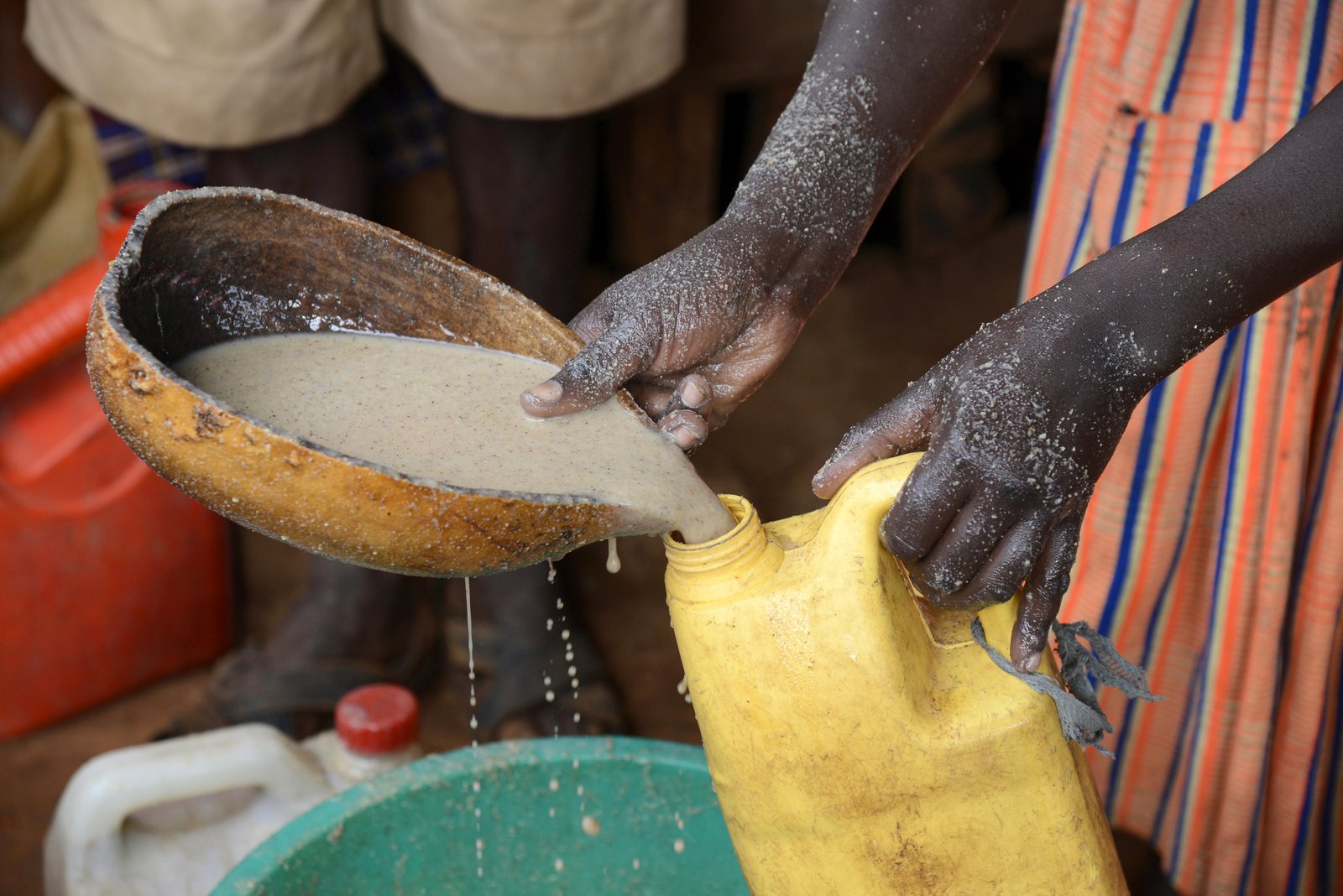From Grain to Glass: Brewing Cameroonian Sorghum Beer

Cameroonian sorghum beer, locally called Bil-bil, is a traditional, lightly sour, opaque brew made by malting and fermenting sorghum (and sometimes maize) to create a mildly alcoholic beverage (1–4% ABV) consumed at room temperature for social and ceremonial occasions Kiva. The process involves four key phases: malt production (soaking, germinating, drying sorghum grains), wort extraction (crushing malt, mashing, boiling), fermentation (wild or starter‐yeast fermentation), and conditioning (straining and bottling) Beer & Brewing Frontiers. Variations include adding maize for body (Amgba), spicing with cloves or allspice, and using residual pulp for a thicker texture ResearchGate. Proper sanitation, temperature control (20–30 °C), and timing (24–48 hrs) ensure a balanced flavor and safe brew Frontiers.
What Is Cameroonian Sorghum Beer (Bil-bil)?
Cameroonian sorghum beer—commonly called Bil-bil—is an opaque, slightly sour beer brewed from sorghum malt, often blended with maize, and fermented by wild yeasts indigenous to the grains ResearchGate. It’s traditionally consumed in the northern Sudan‐Sahelian zones of Cameroon during festivities and communal gatherings ResearchGate. Alcohol content can range from 1% after a brief ferment up to 6–8% with extended fermentation, yielding deeper sour notes Kiva.
Essential Ingredients
- Sorghum Grains: 2 kg of red or white sorghum, cleaned Frontiers
- (Optional) Maize: 500 g to enhance body in Amgba style ResearchGate
- Water: 6–8 L (clean, chlorin-free) American Sorghum
- Spices (Optional): 2–3 cloves, 1 cinnamon stick, or local spices for aroma YouTube
- Starter (Optional): 200 mL of previous batch or baker’s yeast (⅛ tsp) for consistent ferment Frontiers
Equipment Needed
- Large Bowls & Bags: For soaking and germination Beer & Brewing
- Grain Mill or Mortar & Pestle: To crush malted sorghum Beer & Brewing
- Stockpot & Thermometer: For mashing and boiling American Sorghum
- Fermentation Vessel: Wide-mouth jar or food-grade bucket covered with cloth Frontiers
- Strainer or Muslin Cloth: To clarify final beer ResearchGate
- Bottles with Caps: Swing-top or capped bottles to trap carbonation American Sorghum
Step-by-Step Preparation
1. Malt Production
- Soak Grains: Cover sorghum (and maize, if using) with water for 12 hrs, changing water once Beer & Brewing.
- Germinate: Drain and spread on mats; keep moist for 3–4 days until rootlets form Beer & Brewing.
- Dry & Kiln: Sun-dry germinated grains or toast lightly; dry until brittle Beer & Brewing.
- Mill: Grind to a coarse malt powder Beer & Brewing.
2. Wort Extraction
- Mash: Heat 4 L water to 65 °C, stir in malt, maintain for 60 min to convert starches to sugars Frontiers.
- Sparge: Rinse grains with 2 L water at 75 °C; collect sweet wort Frontiers.
- Boil (Optional): Brief boil to sterilize and concentrate wort; add spices during boil YouTube.
3. Fermentation
- Cool: Bring wort to ≤30 °C American Sorghum.
- Inoculate: Transfer to fermenter; add starter or rely on wild yeasts Frontiers.
- Primary Ferment: Cover with cloth; ferment 24–48 hrs at 20–30 °C, stirring daily to aerate Frontiers.
4. Conditioning & Packaging
- Clarify: Strain through muslin into clean vessel; discard solids ResearchGate.
- Bottle: Fill and cap bottles; allow 2–4 hrs at room temperature for secondary carbonation American Sorghum.
- Chill: Refrigerate to slow fermentation; serve at room temperature or slightly cool.
Quality Control & Tips
- Sanitation: Sterilize all equipment to prevent off-flavors Frontiers.
- Temperature: Ferment at 20–30 °C; too warm yields sour vinegar notes, too cool stalls yeast Frontiers.
- Consistency: Use a portion of prior batch as starter to standardize taste and ABV Frontiers.
- Clarity: Allow beer to settle overnight in the fridge and decant for clearer appearance ResearchGate.
Variations & Regional Styles
- Amgba: Sorghum-maize blend, thicker mouthfeel, higher sugars ResearchGate.
- Kpata: Pure sorghum beer with additional spicy medicinal herbs ResearchGate.
- Pito (Ghana): Millet or sorghum brew boiled twice, fermented 24 hrs, boiled again, then served Wikipedia.
Serving Suggestions
- Social Gatherings: Serve in calabashes or communal cups at ceremonies.
- Food Pairings: Enjoy with bean cakes (akara), grilled meats, or spicy stews to complement the sour body Kiva.
- Cultural Rituals: Used in libations and rites among the Gbaya and Mafa peoples Wikipedia.
Frequently Asked Questions
Q1: How strong is traditional bil-bil?
Typically 1–4% ABV after 24 hrs, rising to ~6% with extended fermentation Kiva.
Q2: Can I skip malting?
You can add commercial amylase or chew corn (ptyalin method) but flavor differs from malted beer Wikipedia.
Q3: Why is my beer too sour?
Over-fermentation or high fermentation temps produce excess acetic acid—shorten ferment or chill earlier Academic Journals.
Q4: Is sorghum beer gluten-free?
Yes—pure sorghum contains no gluten, but cross-contamination may occur if equipment isn’t dedicated American Sorghum.
Conclusion
Brewing traditional Cameroonian sorghum beer is a rewarding process that honors generations of artisanal brewers. By mastering malting, mashing, and fermentation—while adhering to sanitation and temperature guidelines—you can craft authentic bil-bil at home. Whether enjoyed at ritual gatherings or casual social events, this opaque, tangy brew offers a deeply cultural taste of Cameroon.



